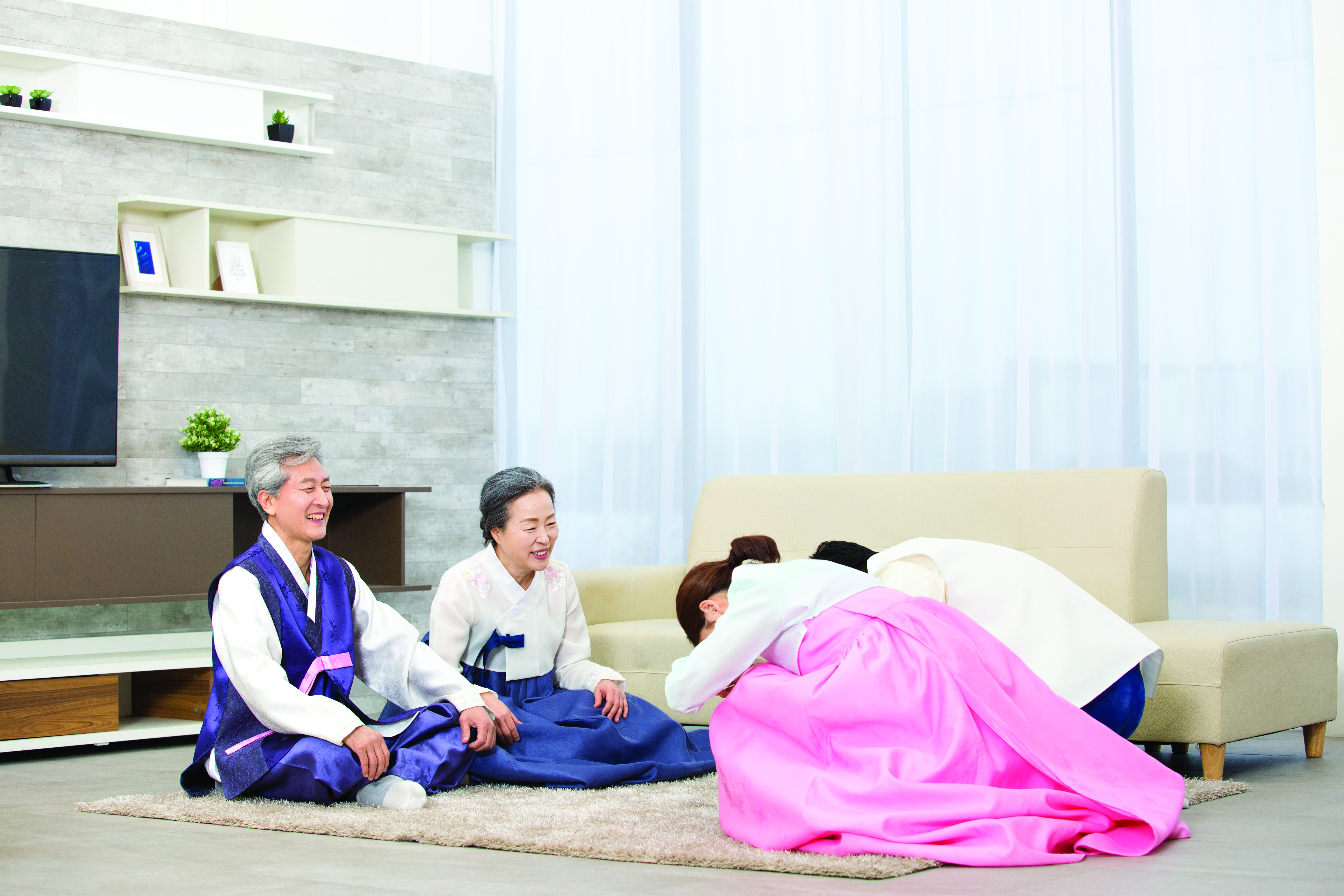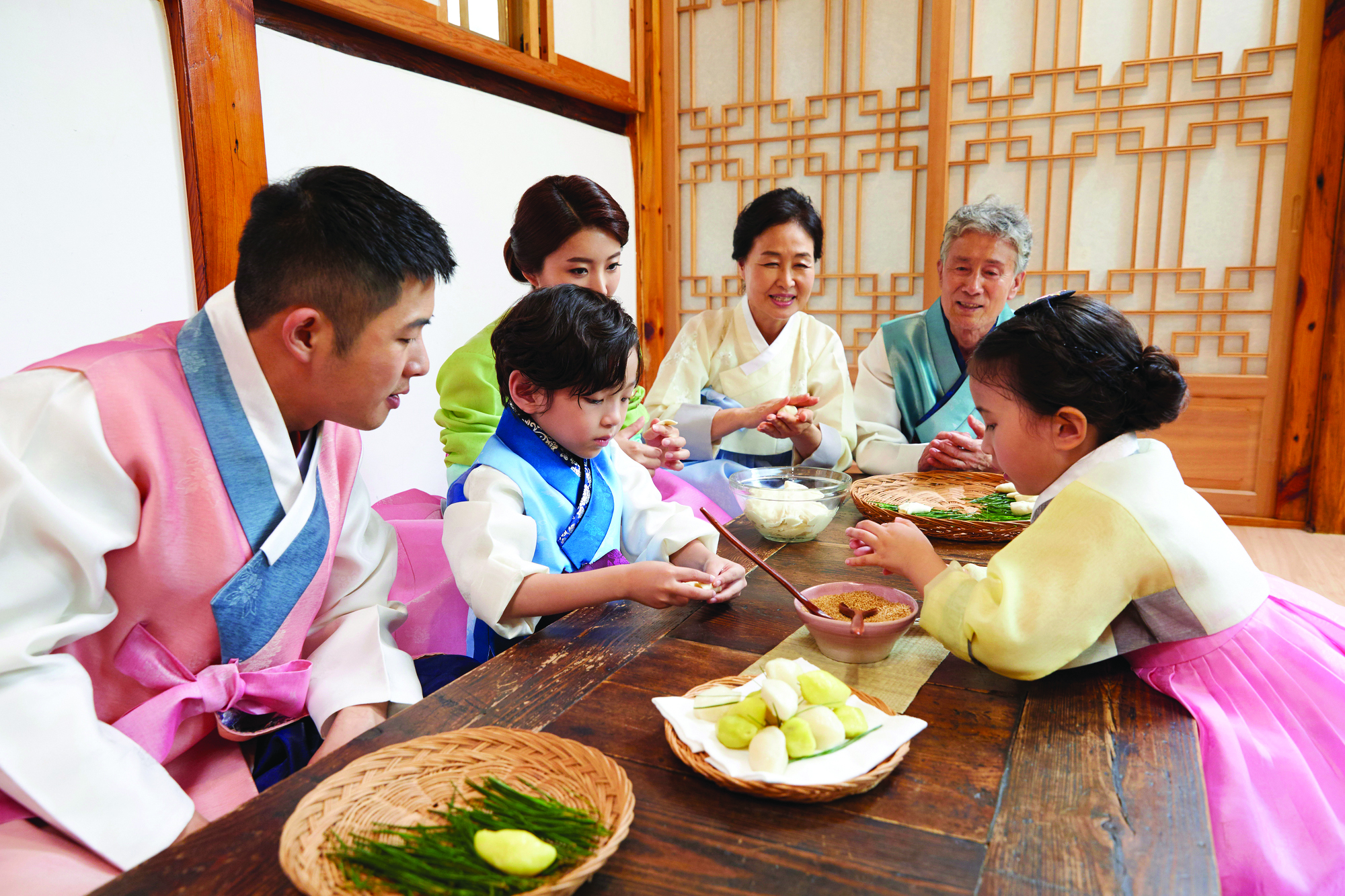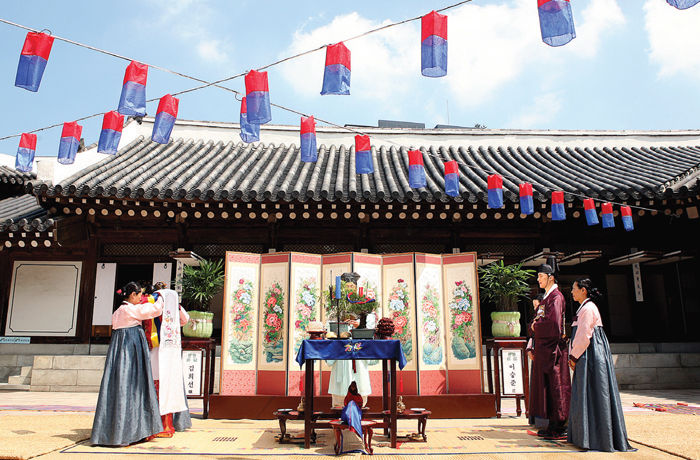Festivals
Until the mid-20th century, Korea was primarily an agricultural society, and the seasonal rhythms of daily life were organized by the lunar calendar. Because farming was hugely important for the subsistence of the members, such society developed a great variety of semi-religious events intended to pray for a good harvest and abundant food. Those events gradually evolved into communal celebrations and festivals.
Korean people celebrate the Lunar New Year’s Day (Seol or Seollal), with a special festival dish called tteokguk or rice cake soup. They believe they can grow one year older after consuming a bowl of rice cake soup on that day. In addition, younger people make a deep traditional bow to their elders and wish them a happy new year, which is called sebae (New Year’s bow). Then, the elders typically reward this gesture by giving New Year’s gift money to their juniors.
Another important seasonal festival called Daeboreum (Greater Full Moon) is celebrated on the 15th day of the first month of the year by the lunar calendar. On that day, people eat special festival food called ogokbap, a dish made with five grains and served with an assortment of cooked vegetables, play games aimed for the unity of the local community, and perform rituals for a good harvest.
Along with the Lunar New Year’s Day, Chuseok, also known as hangawi, is one of the biggest and most important holidays in Korea, which is held on the 15th day of the 8th lunar month. On this day, all family members gather together and hold a ritual with newly harvested crops and fruits to express their appreciation to their ancestors and to nature. As it falls in the harvest season, a time of abundance, there is a Korean saying that goes, "May things be just like hangawi, no more, no less."

JSebae (New Year’s Bow) - Korea has a long tradition of starting the New Year (by the lunar calendar) with the deep traditional bows made by children to their elders.

Chuseok and Songpyeon - Family members gather together and make songpyeon (half-moon shape rice cake), one of representative Chuseok delicacies.
Celebrations
Korean parents mark the 100th day anniversary (baegil) and the first birthday (dol) of their baby with special big celebrations in which their families, relatives, and friends participate. They generally hold a large celebratory banquet for their baby with a ritual prayer for the baby’s health, success in life, and longevity, and the participants give the baby gold rings as a special gift.
Weddings have also been a very important family celebration in South Korea. It was not until the 20th century when most Korean people began to choose their spouse in person, not getting married by the arrangement of their parents or matchmakers.
In the past, a wedding ceremony in Korea was more like a village festival. Families, relatives, and villagers would gather together to celebrate the couple. The groom wore samogwandae, which refers to the uniforms of government officials, and the bride was dressed in a lavishly embroidered bridal robe, such as hwarot or wonsam, and a bejeweled headdress or a coronet named jokduri.
Today, the Western style of a wedding ceremony is widely regarded as the norm, but there are some remaining traditional rituals such as Pyebaek (traditional custom where the bride pays respect to the groom’s family right after the wedding ceremony) and Ibaji (wedding food that the bride presents to the groom’s family).
In South Korea, babies are one year old as soon as they are born because the period when they are in their mother’s womb is also considered for calculation age. A person’s 60th birthday used to be celebrated with a grand party as that age was regarded as enough to have experienced all the principles of heaven and earth. However, today, the average life expectancy of South Koreans is more than 80 years, so people celebrate their 70th birthday in such a grand manner rather than their 60th birthday.

Traditional Wedding - The traditional Korean wedding ceremony largely consists of three stages:
Jeonallye, in which the groom visits the bride’s family with a wooden goose;
Gyobaerye, in which the bride and groom exchange ceremonious bows; and Hapgeullye, where the marrying couple shares a cup of wine.
The photo shows a bride and groom exchanging ceremonious bows during the Gyobaerye stage of their wedding ceremony.
National Holidays
In South Korea, there are five national holidays designated by the government. First, March 1st Movement Day commemorates the Korean independence movement, which was held by the public on March 1, 1919 to show resistence against the Japanese occupation of Korea. Second, Constitution Day or Jeheonjeol is observed on July 17th, the day that the South Korean constitution was proclaimed in 1948. Third, National Liberation Day (Gwangbokjeol, August 15), celebrated annually on August 15th, is to commemorate Victory over Japan Day at the end of World War II. Fourth, National Foundation Day (Gaecheonjeol), celebrated annually on October 3rd, is to mark the foundation of Gojoseon, the first state of the Korean nation, on the 3rd day of the 10th lunar month, 2333 BCE. Fifth and last, Hangeul Proclamation Day (Hangeul Day), celebrated annually on October 9th, is to commemorate the invention and proclamation of the Korean writing system.
Public Holidays
The public holidays during which work is suspended by law in South Korea include New Year’s Day, Seollal (or Lunar New Year’s Day, celebrated for 3 days), Chuseok (Mid-autumn Festival on the 15th day of the 8th lunar month, celebrated for 3 days), Buddha’s Birthday (on the 8th day of the 4th lunar month), Children’s Day (May 5), Memorial Day (June 6), and Christmas Day. There are 15 public holidays in total on which businesses are closed by law and employees have a day off, from which Constitution Day is excluded.